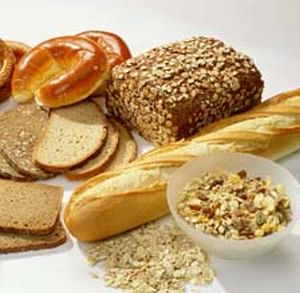A visit to the Cath lab or Electrophysiology lab is not exactly a good time nor is being strapped to a 24 hour Holter monitor or 2 week loop recorder. Before a cardiac event occurs why not be proactive and alter eating habits to reduce the chances of needing a cardiac event monitor or EP procedure in the future. It is often difficult to change your eating habits even though you might know that eating certain foods can increase your risk of heart disease. This article is geared to you if you have been eating unhealthy for many years or you simply want to fine-tune your diet. Once you know which foods to limit and which foods to eat more of, you will be well on your way towards a heart healthy diet.
3. Choose whole grains
Whole grains are known to be good sources of dietary fiber and other nutrients that are known to play a role in regulating blood pressure. You can easily increase the amount of whole grains in a heart healthy diet by simply substituting refined grain products with whole grains. Or why not try whole grain pasta, barley, couscous, or quinoa.
Another simple way to increase whole grains to your diet is ground flaxseed. Flaxseeds are small seeds that are high in omega-3 fatty acids and fiber, which is known to lower your total blood cholesterol. You can grind the seeds in a food processor or coffee grinder and stir a teaspoon of them into applesauce, yogurt, or hot oatmeal.
Table 3 Grains to choose and avoid
Heart Healthy Way
- Ground flaxseed
- Oatmeal
- Whole grain pasta
- Brown rice, barley or Buckwheat
- High fiber cereal
- 100% whole grain bread
- Whole wheat flour
The Other Way
- High in fat crackers
- Buttered popcorn
- Egg noodles
- Cake, pies, donuts, and muffins
- Granola bars
- Cookies and Biscuits
- Frozen waffles
- White bread
- White refined flour
4. Reduce unhealthy fats and cholesterol
Limiting the amount of trans-fats and saturated fats you eat is important to reduce your blood cholesterol and lower your risk of developing coronary artery disease. A high cholesterol level in blood can lead to plaque formation in your arteries, called atherosclerosis, which significantly increases your risk of having a heart attack and a stroke.
The American Heart Association has guidelines for the amount of fat and cholesterol you can include in a heart healthy diet:
Saturated Fat: Consume less than 7% of your total daily calories of saturated fats, or less than 14 g for a 2,000-calorie-a-day diet
Trans Fat: Consume less than 1% of your total daily calories of trans-fat, or less than 2g of trans fat for a 2,000-calorie-a-day diet
Cholesterol: Consume less than 300 mg a cholesterol a day for healthy adults; less than 200 mg a day for adults with high levels of LDL (“bad”) cholesterol or those who are taking cholesterol-lowering medication.


